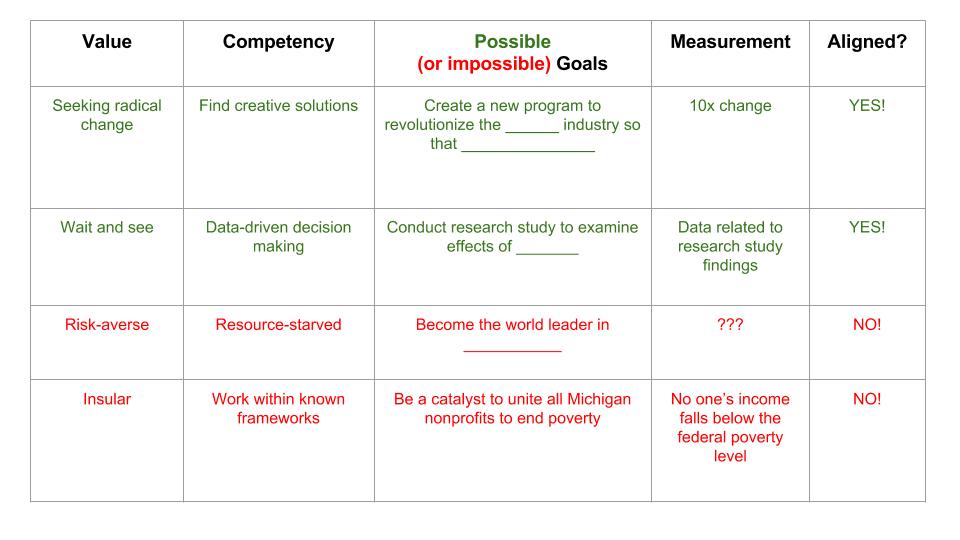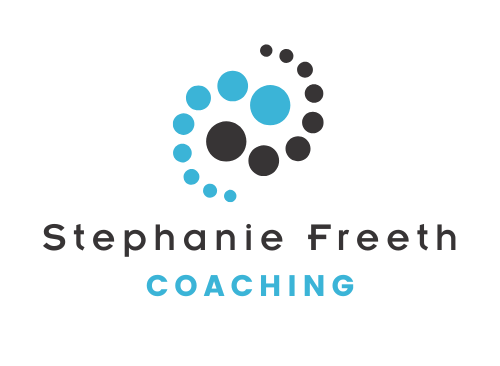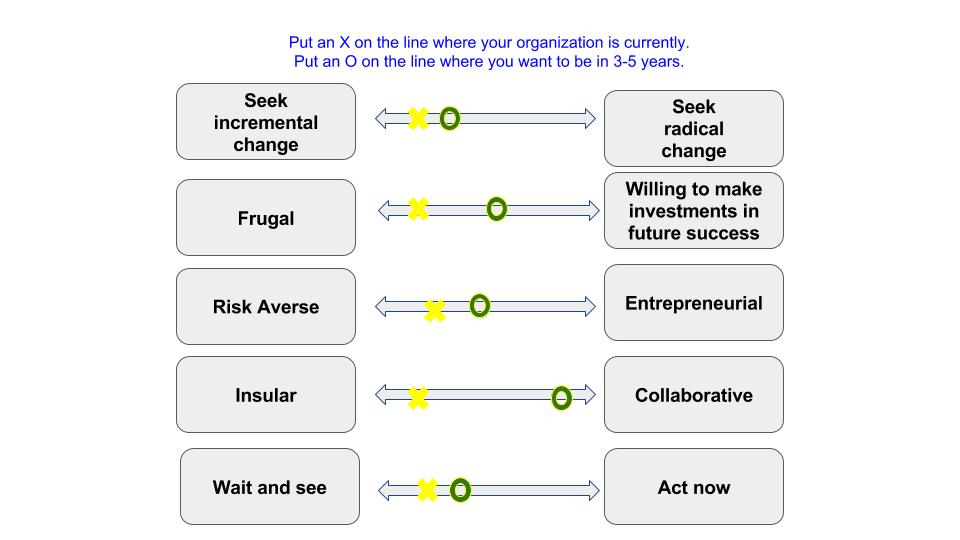This week I wanted to give you a sneak peek into some prep work I am doing for clients who are setting strategic goals. Goal setting is at the heart of strategic planning, so it’s really important to get this part right. In working with a variety of nonprofit boards and staff members, I have found that optimal goal setting results are not achieved using unbridled brainstorming. Here’s why this doesn’t work. Doing that type of blue sky brainstorming can lead organizations to latch on to goals that really have no grounding in two very important predictors of success: the organization’s values and competencies.
By really understanding an organization’s values and their basic competencies first, goal setting can then be aligned with those values and competencies. This alignment sets an organization up for success in achieving their goals, strategies and tactics once the strategic plan is being implemented.
Organizational Values
A great tool to make implicit organizational values more explicit is to set up a series of values that are in dynamic tension. This is a tool that my colleague Neel Hajra and I used in a staff retreat at the Ann Arbor Area Community Foundation a few years ago. I was reminded about this tool recently by Jim Hackett, former University of Michigan Interim Athletic Director and former CEO of Steelcase. I had the wonderful opportunity to hear Jim Hackett speak at Dr. Rob Pasick’s most recent Leaders Connect event. Hackett described how he used values pairs to set the criteria for hiring the new football coach, Jim Harbaugh! (Bottom line: If this tool worked to help bring Harbaugh to Michigan, it must be good!) The tool is in keeping with Hackett’s design-thinking orientation that he honed at Steelcase and throughout his career. For one of my previous posts on design thinking in strategic planning, click here.
Here’s how values pairs can work. In the example below, board and staff members put an X where they think the organization is currently and an O where they want the organization to be (in 3-5 years, for example). These are just a handful of values pairs, but you could add others that are applicable to your organization. (Thanks to another former colleague, Mike Butman, for brainstorming these pairs with me yesterday.)

Looking at pairs of values in this way can bring out great discussion and debate. If an organization is looking to make a big shift from being risk averse to more entrepreneurial, the goals and strategies are going to need to account for that big shift. If the organization is currently inward-looking and insular but wants to be more collaborative in seeking community-based solutions, it’s important to grasp how big the gap can be between a current reality and a desired state. This tools helps bring these factors to the table early in the strategic planning process.
Organizational Competencies
In addition to understanding an organization’s values, it’s important to understand the organization’s competencies in a similar manner. While values are underlying, deep-rooted beliefs that lead to certain behaviors, I would argue that competencies are more related to skills and the ability to perform in certain ways. Again, the pairs below are provided as examples, and organizations are encouraged to add pairs that may be more relevant to their own situation.

As with the gaps in current and future states for values, the same gaps can be seen with organizational competencies. It takes real work to move an organization to a data-driven decision-making model if they are more accustomed to making decisions based on intuition and tradition.
Aligning values, competencies, goals and strategies
Only in looking at values and competencies together is it time to bring forward possible goals, strategies and tactics that are available to an organization at a certain point in its’ trajectory. Once board and staff members have grappled with their values and competencies, the set of strategic goals that are realistically available to them becomes much more apparent. Below is one more tool that shows two examples with aligned values, competencies and goals and two examples that are NOT aligned.

In the second example, it makes sense that an organization that values a “wait and see” approach (vs a “take action now” approach) and also has a competency for “data-driven decision-making” would pursue a strategic goal to “conduct a research study to understand the effects of _____.” By contrast in the fourth example, a “risk-averse” and “resource-starved” organization does not have the values or competency to pursue a bold strategy like “becoming a world leader in ______.”
This set of exercises and tools highlights possible strategic goals that will be achievable precisely because they are aligned. I have seen too many organizations chase after a HUGE vision but struggle mightily along the way because their true values and competencies just didn’t support all of the things that needed to get done to achieve that big vision.
VALUE + COMPETENCIES first, aligned with strategic GOALS + tactics =
MISSION IMPACT and future SUCCESS

